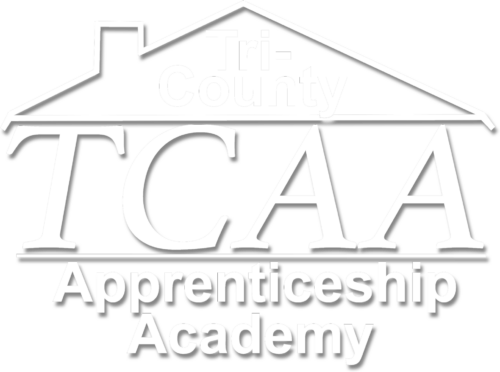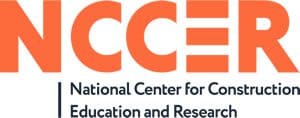Plumber Apprenticeship
Plumber Snapshot
Plumbers Often Do the Following:
- Plumbers carry out regular maintenance of plumbing systems at commercial and residential sites.
- Plumbers perform installation of plumbing systems at new properties.
- Plumbers inspect previously installed plumbing systems at commercial and residential sites.
- Plumbers perform any necessary repairs to previously installed systems.
- Plumbers keep up to date with current safety regulations and requirements for the various plumbing systems a company installs and maintains.
- Plumbers work carefully to follow all current regulations for plumbing work to ensure that all installed systems pass inspections.
- Plumbers work on both service and commercial sites must be able to communication with clients, team members and management.
- Plumbers must keep accurate and detailed work logs, detailed reports of work done at various job sites.
- Plumbers interpret construction drawings
- Plumbers must maintain material inventories.
TCAA’S CURRICULUM is Nationally Accredited with the National Center for Construction Education and Research (NCCER)
Pre-Requirement for Plumber Apprenticeship is that all apprentices are required to pass and complete our NCCER Core Curriculum
Plumber Apprenticeship Year 1
Introduction to the Plumbing Profession:
- Introduces trainees to the many career options available in today’s plumbing profession.
Plumbing Safety:
- Discusses the causes of accidents and their consequences and repercussions in terms of delays, increased expenses, injury, and loss of life.
Plumbing Tools:
- Instructs trainees in the care and use of the different types of hand and power tools they will use on the job.
Introduction to Plumbing Math:
- Reviews basic math concepts. Explains how to measure pipe using fitting tables and framing squares and how to complete calculations.
Introduction to Plumbing Drawings:
- Introduces apprentices to the different types of plumbing drawings they will encounter on the job and discusses how to interpret and apply them when laying out and installing plumbing systems.
Plastic Pipe and Fittings:
- Introduces apprentices to the different types of plastic pipe and fittings used in plumbing applications.
Copper Tube and Fittings:
- Discusses sizing, labeling and applications of copper tube and fittings and reviews the types of valves that can be used on copper tube systems.
Cast-Iron Pipe and Fittings:
- Introduces apprentices to hub-and-spigot and no-hub cast-iron pipe and fittings and their applications in DWV systems.
Steel Pipe and Fittings:
- Discusses threading, labeling, and sizing of steel pipe and reviews the differences between domestic and imported pipe.
Introduction to Plumbing Fixtures:
- Discusses the proper applications of code-approved fixtures in plumbing installations.
Introduction to DWV Systems:
- Explains how DWV systems remove waste safety and effectively.
Introduction to Water Distribution Systems:
- Identifies the major components of water distribution systems and describes their functions.
Plumber Apprenticeship Year 2
Plumbing Math Two:
- Explains the Pythagorean theorem and reviews methods for laying out square corners.
Reading Commercial Drawings:
- Explains how to identify and interpret civil, architectural, structural, HVAC/mechanical, plumbing, and electrical drawings.
Structural, Penetrations, Insulation, and Fire-Stopping:
- Introduces methods for adjusting structural members, insulating pipe, and installing fire stopping.
Installing and Testing DWV Piping:
- Explains how to locate, install, connect, and test a complete drain, waste, and vent (DWV) system.
Installing Roof, Floor, and Area Drains:
- Covers the proper techniques for locating, installing, and connecting roof, floor, and area drains and floor.
Installing and Testing Water Supply Piping:
- Explores the proper techniques for locating, installing, and testing complete water service and distribution systems, including meters, water heaters, water softeners, and hose bibs.
Types of Valves:
- Reviews types of valves, their components, and applications.
Installing Fixtures and Valves:
- Covers the installation of basic plumbing fixtures, including bathtubs, shower stalls, lavatories, sinks, water closets, and urinals.
Installing Water Heaters:
- Discusses gas-fired, electric, tank less, heat pump, and indirect water heaters, components, and applications..
Basic Electricity:
- Introduces electrical safety and the principles of electricity including voltage, current, resistance, and power.
Fuel Gas And Fuel Oil Systems:
- Introduces techniques for safe handling of natural gas, liquefied petroleum gas, and fuel oil.
Plumber Apprenticeship Year 3
Applied Math:
- Reviews math concepts, including weights and measures, area and volume, temperature, pressure, and force.
Sizing and Protecting the Water Supply System:
- Reviews the factors that can reduce efficiency of water supply piping. Introduces different backflow prevention devices and explains how they work, where they are used, and how they are installed in water supply systems.
Potable Water Supply Treatment:
- Explains how to disinfect, filter, and soften water supply systems.
Types of Venting:
- Reviews the different types of vents that can be installed in a DWV system and explains how they work.
Sizing DWV and Storm Systems:
- Explains how to calculate drainage fixture units for waste systems.
Sewage Pumps and Sump Pumps:
- Discusses the installation, diagnosis, and repair of pumps, controls, and sumps in sewage and storm water removal systems.
Corrosive-Resistant Waste Piping:
- Discusses corrosive wastes and reviews related safety issues and hazard communications.
Compressed Air:
- Explains the principles of compressed air systems and describes their components and accessories.
Service Plumbing:
- Covers the troubleshooting and repair of fixtures, valves, and faucets in accordance with code and safety guidelines.
Plumber Apprenticeship Year 4
Business Principles for Plumbers:
- Introduces apprentices to concepts and practices that are essential for competitive, successful plumbing businesses.
Fundamentals of Crew Leadership:
- Covers basic leadership skills and explains different leadership skills and explains different leadership styles, communication, delegating, and problem solving.
Water Pressure Booster and Recirculation Systems:
- Builds on apprentices’ previous experience with pumps, storage tanks, controls, and pipes and fittings by teaching to assemble those components into systems that boost water pressure and provide hot water.
Indirect and Special Waste:
- Describes the code requirements and installation procedures for systems that protect against contamination from indirect and specials wastes.
Hydronic and solar Heating Systems:
- Introduces the basic types of hydronic and solar heating systems and their components.
Codes:
- Discusses the different codes used by plumbers across the country and explains how those codes are written, adopted, modified, and implemented.
Private Water Supply Well System:
- Describes the operation of pumps and well components.
Private Waste Disposal Systems:
- Describes the types of private waste disposal systems, discusses the maintenance and installation of these systems, and explains how to determine the local code requirements for these systems.
Swimming Pools and Hot Tubs:
- Introduces apprentices to plumbing systems in swimming pools, hot tubs, and spas.
Plumbing for Mobile homes and Travel Trailer Parks:
- Describes the location and layout of plumbing systems for mobile homes and travel trailer parks.
Introduction to Medical Gas and Vacuum Systems:
- Provides and introduction to the various types of medical gas and vacuum systems used in healthcare facilities today.
“TCAA was/is very flexible and provided a place to come and advance your career. I appreciated how they worked around my work schedule and I was able to work and go to school. Learning this trade both at TCAA and in the field made it possible for me to become a Superintendent.” Benjamin Brignol – Class of 2013 – B & I Contractors.
GET STARTED NOW!
We are here to help you begin your career in the Plumbing field.
Wish to join TCAA?
Have Questions?
Contact:
Jill Hagen: JHagen@tcaafl.com
Christine Sardina: CSardina@tcaafl.com

